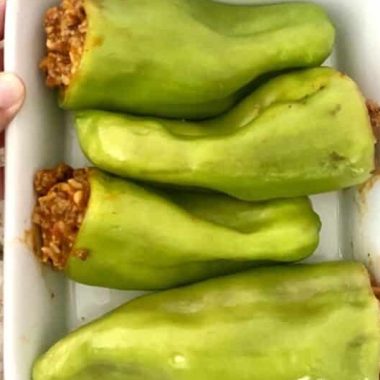Why You’ll Love This Traditional Mutton Curry
If you’re craving a flavorful and comforting meal that brings the richness of Indian cuisine to your table, this authentic Indian mutton curry is the answer. With succulent bone-in mutton slow-cooked in a spicy, aromatic gravy made from onions, tomatoes, yogurt, and classic Indian spices, this curry is a soul-satisfying delight.
Perfect for festive gatherings, family dinners, or when you simply want something indulgent, this dish pairs beautifully with basmati rice, roti, or butter naan. What makes this dish special is its deep flavor, achieved by layering spices and giving the meat enough time to tenderize and soak in all the goodness.
Let’s dive into how you can recreate this homestyle mutton curry that rivals restaurant-quality dishes, right from your kitchen.
Choosing the Right Cut of Mutton
When making traditional Indian mutton curry, using bone-in cuts like shoulder or leg pieces enhances the depth of flavor. Bones release natural gelatin and richness when slow-cooked, making the curry thicker and more flavorful. Aim for fresh, trimmed cuts from a young goat (also called chevon or kid goat) for the best taste and tenderness.
Essential Ingredients for Flavor-Packed Mutton Curry
This recipe keeps the ingredient list simple yet authentic:
- Mutton (500g) – Bone-in pieces for a richer broth and deeper taste.
- Onions (2, sliced) – Slow-fried until golden to form the base.
- Tomatoes (2, pureed) – Give the gravy a naturally sweet tang.
- Yogurt (2 tbsp) – Adds creaminess and tenderizes the meat.
- Ginger-Garlic Paste (1 tbsp) – A staple for Indian curries; adds pungency and depth.
- Whole Spices – Cumin seeds, cloves, cardamom, cinnamon, and bay leaf infuse the oil with earthy warmth.
- Ground Spices – Red chili, turmeric, coriander, garam masala, and black pepper bring heat and balance.
- Kasuri Methi (½ tsp) – Dried fenugreek leaves offer a signature North Indian aroma.
- Oil or Ghee (3 tbsp) – Ghee gives richness, while oil is a lighter option.
- Fresh Coriander – For that final aromatic garnish.
Step-by-Step: How to Make Mutton Curry at Home
Let’s break down the cooking process for this flavorful mutton curry:
1. Bloom the Spices in Oil or Ghee
Start by heating 3 tablespoons of ghee or oil in a heavy-bottomed pot or pressure cooker. Once hot, toss in the cumin seeds, followed by the whole spices – cloves, green cardamom pods, cinnamon stick, and bay leaf. Let them crackle for a few seconds until fragrant. This crucial step infuses the fat with spice oils, forming a flavorful base.
2. Caramelize Onions for Depth
Add finely sliced onions to the pot. Sauté over medium heat, stirring frequently, until they turn deep golden brown. This can take about 10–12 minutes. Properly browned onions give the curry its signature color and flavor, so don’t rush this step.
3. Cook Ginger-Garlic Paste and Tomato Puree
Next, stir in the ginger-garlic paste. Cook for 2–3 minutes until the raw smell disappears. Then, add the tomato puree and cook until the oil starts separating from the masala – a sign that the base is perfectly roasted.
4. Brown the Mutton
Add the mutton pieces to the pot and sear them on high heat for 5–7 minutes. This locks in the juices and builds flavor. Coat the meat well in the onion-tomato mixture.
5. Spice It Up
Sprinkle in turmeric powder, red chili powder, coriander powder, and salt. Stir well to ensure the spices evenly coat the meat. Add the yogurt now and cook for another 4–5 minutes. Yogurt not only adds tanginess but also acts as a natural tenderizer.
6. Simmer or Pressure Cook
Add enough water to just cover the meat. If you’re using a pressure cooker, secure the lid and cook for about 5–6 whistles on medium heat. For a traditional slow cook method, cover the pot with a lid and let it simmer on low for 45–60 minutes, stirring occasionally until the mutton becomes fork-tender.
7. Final Seasoning Touches
Once the mutton is cooked through, check the consistency of the gravy. Add more water if needed and simmer for 5–10 minutes to thicken. Now add garam masala, black pepper, and crushed kasuri methi. Let the curry bubble gently for another 5 minutes so the flavors blend beautifully.
8. Garnish and Serve
Top with freshly chopped coriander leaves and serve piping hot with fluffy steamed rice, buttery naan, or soft chapatis.
Tips for Perfect Mutton Curry Every Time
- Use Bone-In Mutton: It enhances flavor and makes the gravy richer.
- Low & Slow Cooking: Patience pays off – the longer the meat simmers, the better it tastes.
- Yogurt Tip: Use full-fat yogurt at room temperature to prevent curdling.
- Oil Separation Sign: Always cook the masala until oil separates; it means your spices are properly roasted.
- Balance the Spice: Adjust chili powder and pepper to suit your heat tolerance.
How to Serve Indian Mutton Curry
Pair this curry with:
- Steamed Basmati Rice – A classic combo.
- Jeera Rice – Cumin rice enhances the subtle spice notes.
- Tandoori Roti or Butter Naan – Scoop up the gravy with fluffy, crispy bread.
- Lachha Paratha – A layered flatbread that adds texture.
Add a side of pickled onions or cucumber raita for freshness.
How to Store and Reheat Leftovers
This curry tastes even better the next day as the flavors deepen. Store in an airtight container in the fridge for up to 3 days.
To reheat:
- Microwave: 1–2 minutes with a splash of water.
- Stovetop: Reheat in a covered pan over low heat.
You can also freeze it for up to 2 months. Thaw in the fridge overnight and reheat thoroughly before serving.
Health Benefits of Spiced Mutton Curry
While indulgent, this dish also provides:
- High-Quality Protein – From mutton, supporting muscle repair.
- Iron & Zinc – Promotes immune health and energy levels.
- Anti-Inflammatory Spices – Turmeric, black pepper, and cinnamon are packed with antioxidants.
If you’re mindful of fat, you can use less oil or substitute lean goat meat for a lighter version.
Mutton Curry Variations You Can Try
- South Indian Mutton Curry – Add curry leaves, coconut milk, and mustard seeds.
- Spicy Dhaba-Style – Increase red chili and fry the masala until deep red.
- Bengali Kosha Mangsho – Skip tomatoes, and slow cook with mustard oil and whole spices.
- Kashmiri Mutton Rogan Josh – Use fennel and dry ginger with yogurt for a distinct flavor.






